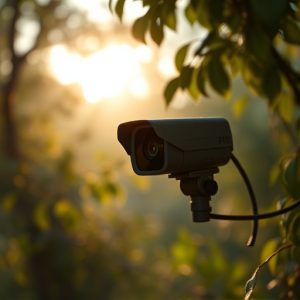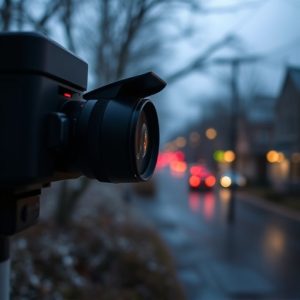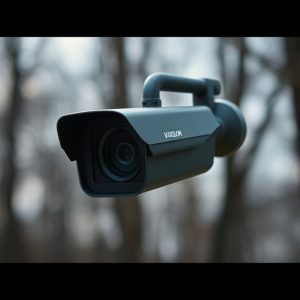Uncover Hidden Cameras: Expert Tips for Home Monitoring Detection
Hidden camera technology has advanced significantly, making detection difficult but not impossible……..
Hidden camera technology has advanced significantly, making detection difficult but not impossible. Devices range from tiny to sophisticated varieties disguised as everyday items, capturing video and audio secretly. Detection methods include electromagnetic scans, visual inspections, thermal imaging, and motion-sensing alarms. Staying informed about the latest tech is crucial for home privacy protection. Visual cues like unusual objects, clean areas, and shadows can indicate hidden cameras. Thermal imaging and RF detectors are professional tools to locate covert surveillance equipment effectively. Balancing security with legal and ethical boundaries is essential when implementing hidden cameras, adhering to regional laws and respecting privacy expectations.
Hidden cameras, a sneaky threat to individual privacy, have become increasingly sophisticated in their design and detection. This comprehensive guide delves into the world of home monitoring, addressing the growing concern of hidden camera technology. We’ll explore common types, visual and environmental cues, and advanced detection methods. Learn how to identify these devices while navigating legal boundaries and ensuring ethical practices when employing home monitoring solutions like hidden cameras for safety and peace of mind.
- Understanding Hidden Camera Technology: Uncover Common Types and Detection Methods
- Visual Cues and Environmental Clues: What to Look For in Your Surroundings
- Advanced Tools and Techniques for Detecting Hidden Signals
- Legal Considerations and Ethical Use: Protecting Privacy While Monitoring
Understanding Hidden Camera Technology: Uncover Common Types and Detection Methods
Hidden camera technology has evolved significantly, making it increasingly challenging to identify these devices, which are often employed for home monitoring or surveillance purposes. Understanding the types and detection methods is crucial in staying ahead of potential privacy breaches. Common hidden cameras can range from tiny, pin-sized models that can fit discreetly into a buttonhole, to more advanced varieties disguised as everyday objects like smoke detectors, light bulbs, or even paintings. These devices are designed to capture video and audio secretly, often with infrared capabilities for low-light conditions.
Detection methods vary depending on the type of hidden camera and the technology employed. One approach involves using specialized detection tools that can scan a space for electromagnetic emissions, which many cameras produce. Another method is visual inspection, where individuals look for unusual objects or signs of tampering in a room. Advanced techniques include thermal imaging, which can reveal heat signatures indicative of active cameras, and motion-sensing lights or alarms that trigger when suspicious movements are detected. For home monitoring, being vigilant about potential hiding spots and staying informed about the latest surveillance technology is key to safeguarding privacy.
Visual Cues and Environmental Clues: What to Look For in Your Surroundings
When it comes to detecting hidden monitoring devices like cameras, understanding visual and environmental cues is crucial. In the age of advanced surveillance technology, many hidden cameras are designed to be nearly invisible, blending seamlessly into everyday objects or fixtures. However, keen observation can help you identify potential threats. Look for unusual items or setups, such as a small, unaccounted-for device attached to a wall or ceiling, an inexplicably clean area with no visible signs of wear and tear, or a single spot where light seems to be consistently cast upon a particular surface.
Environmental clues can also provide valuable insights. For instance, if you notice shadows that seem out of place or unusual reflections in windows or glass surfaces, it could indicate the presence of a hidden camera. Additionally, keep an eye on areas where privacy is naturally limited, as these spots are often targeted by surveillance devices. By being aware of your surroundings and paying attention to these visual and environmental cues, you can better protect your home from covert monitoring using hidden cameras for home monitoring purposes.
Advanced Tools and Techniques for Detecting Hidden Signals
In today’s digital age, advanced tools and techniques have emerged to assist in detecting hidden signals, particularly from hidden cameras for home monitoring. One such tool is thermal imaging technology, which can reveal heat signatures of electronic devices, including covert cameras. By analyzing temperature variations, professionals can identify suspicious equipment that may be hidden behind walls or other surfaces.
Another powerful method involves the use of radio frequency (RF) detectors and signal analyzers. These devices are capable of scanning for wireless signals emitted by hidden cameras, allowing users to pinpoint their location. With the right software, these signals can be triaged, filtering out false positives and providing a clearer picture of potential threats. This approach is especially useful in high-risk areas where covert surveillance might be a concern.
Legal Considerations and Ethical Use: Protecting Privacy While Monitoring
When considering hidden monitoring devices, such as cameras for home security, it’s paramount to balance effective surveillance with legal and ethical boundaries. The use of hidden cameras is governed by regional laws and regulations that vary significantly. Always check your local legislation regarding privacy rights and the legal permissibility of installing and operating hidden cameras. Respecting privacy isn’t just a moral imperative; it also helps avoid potential legal repercussions.
For instance, many jurisdictions have strict rules on where cameras can be placed within a residence or on private property to ensure that individuals maintain a reasonable expectation of privacy. Using hidden cameras for monitoring must adhere to these guidelines, focusing on common areas like living rooms, kitchens, and hallways, where there’s typically no reasonable expectation of privacy. Ethical considerations also dictate transparency—informing all residents or employees that surveillance is in place promotes openness and trust while ensuring everyone is aware of their surroundings.
In the quest for enhanced home security, understanding hidden camera technology and employing effective detection methods are essential steps. By familiarizing yourself with various camera types and utilizing visual as well as advanced technical cues, you can become more alert to potential hidden cameras. Remember, while the use of hidden monitoring devices offers valuable peace of mind, it’s crucial to respect privacy rights and adhere to legal boundaries. Balancing security needs with ethical considerations ensures a safe and private environment for all.


